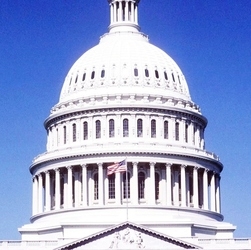 On March 29, the Internal Revenue Service (IRS) issued Revenue Procedure 2011-26, which provides guidance concerning the first-year depreciation deduction for new assets (bonus depreciation).
On March 29, the Internal Revenue Service (IRS) issued Revenue Procedure 2011-26, which provides guidance concerning the first-year depreciation deduction for new assets (bonus depreciation).
The IRS guidance clarifies various issues related to the bonus depreciation, particularly the criteria for qualifying for the temporary expansion of the bonus depreciation from 50% to 100%. This guidance offers significant benefits to investors, developers, manufacturers and other participants in the energy sector.
In addition to normally allowable depreciation deductions, businesses are permitted to recover a bonus depreciation in the first year of the life of an eligible asset.
In December 2010, Congress expanded the bonus depreciation from 50% to 100%. Various requirements must be satisfied in order for an asset to be eligible for the 100% bonus depreciation. First, the asset must be eligible for the Modified Accelerated Cost Recovery System (MACRS) and have a recovery period of 20 years or less. The MACRS specifies the life over which the cost basis of tangible property is recovered by annual deductions for depreciation.
For example, under the MACRS, certain wind, geothermal and solar assets are depreciated over five years, energy-efficient lighting systems are depreciated over a seven-year period and smart meters have a depreciation period of 10 years. These assets will qualify for 100% bonus depreciation, if they meet additional criteria.
The taxpayer must acquire the asset and place it in service after Sept. 8, 2010, but before Jan. 1, 2012. The qualified property is treated as being acquired during this period if the taxpayer pays for the asset; incurs its cost; constructs, manufactures or produces the asset; or enters into a binding written contract for the asset.
A safe-harbor provision is available for a taxpayer that constructs, manufactures or produces the asset, or contracts with a third party under a binding written contract to do so. Under the safe-harbor provision for the 100% bonus depreciation, the acquisition requirement will be satisfied if physical work on the asset commences during the eligibility period.
Also, under the safe-harbor provision, new assets will qualify for the bonus depreciation if 10% of the total cost is accrued during the eligibility period. However, even for those projects that cannot fulfill this time requirement, the asset will nevertheless qualify for the 50% bonus depreciation if it is placed in service before Jan. 1, 2013.
For qualified property that is sold during its first year, a taxpayer becomes ineligible to qualify for the bonus depreciation, unless the taxpayer either sells and leases back the asset within three months of the date the asset was originally placed in service or the lessor of qualified property syndicates its leasehold interest within three months of the date it was originally placed in service.
For assets that qualify for the investment tax credit, such as wind or solar equipment, the taxpayer must reduce its depreciable basis in the asset by 50% of the credit's value prior to claiming the 100% bonus depreciation. The same is true for payments in lieu of Section 48 tax credits or the Section 1603 cash grant.
By doubling the bonus depreciation, Congress has encouraged further deployment of renewable technologies, while benefiting participants in the renewable energy sector. Investors will see an expedited return on investment (ROI) for eligible assets.
For example, a project that had previously received approximately 30% of its costs from the federal government under Section 48 tax credits or the Section 1603 cash grant may now see over half of all costs covered in the first year of the asset's life if it were to qualify for the 100% bonus depreciation.
Also, with an expedited ROI, the power purchase agreement (PPA) term for renewable assets may be reduced. A project that might have required a 15-year PPA absent the 100% bonus depreciation may now only need a 10-year term in order for investors to get an ROI.
While developers will continue to seek purchasers who are willing to be locked into a long-term agreement, the bonus depreciation eases the necessity to do so. This ultimately opens the field for potential purchasers of electricity who might otherwise have been averse to a PPA under a longer term.
Michael Platner is senior tax counsel and John Frenkil is an associate at Van Ness Feldman in Washington, D.C. Platner can be reached at mlp@vnf.com or (202) 298-1988. Frenkil can be reached at drf@vnf.com or (202) 298-1867.



